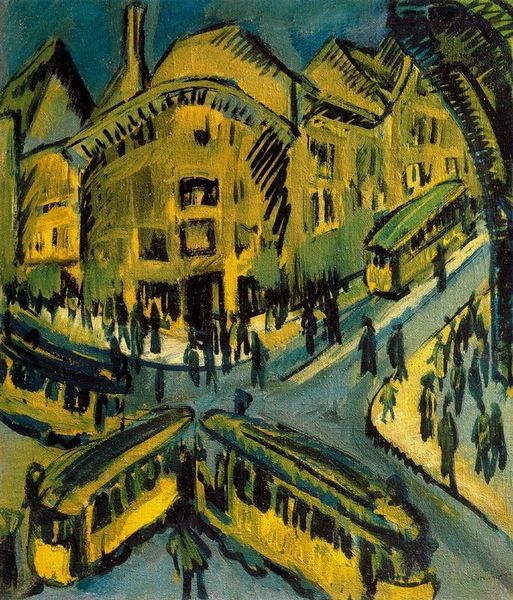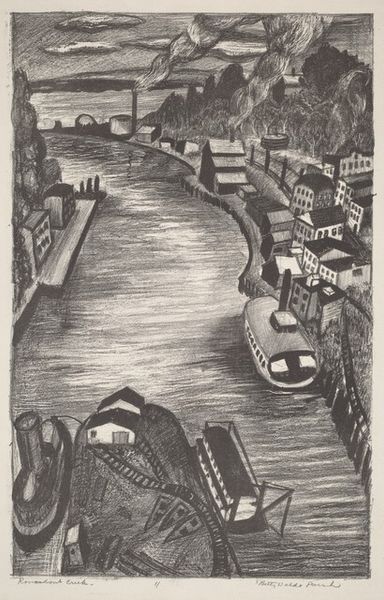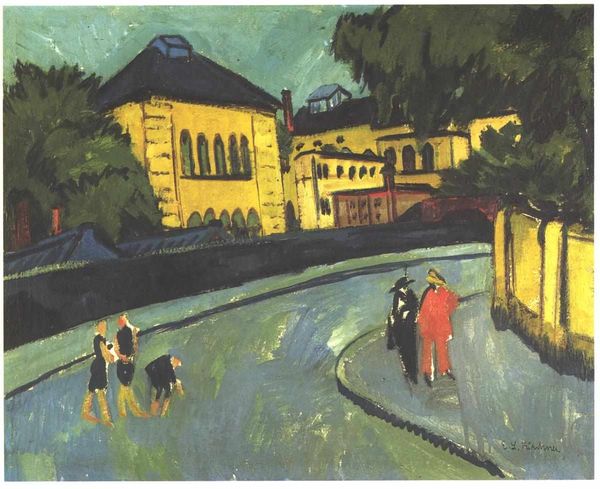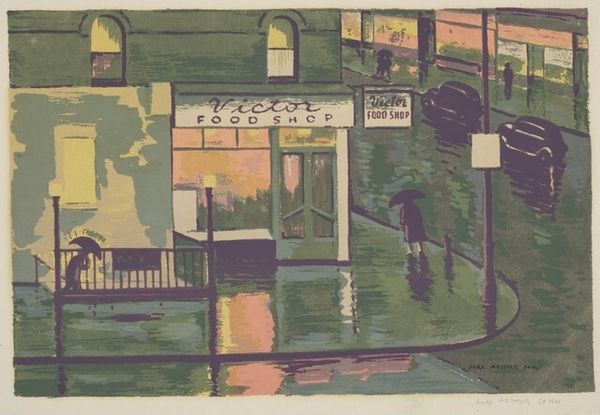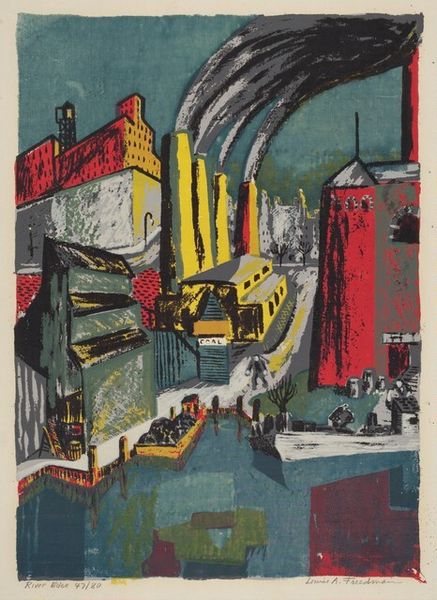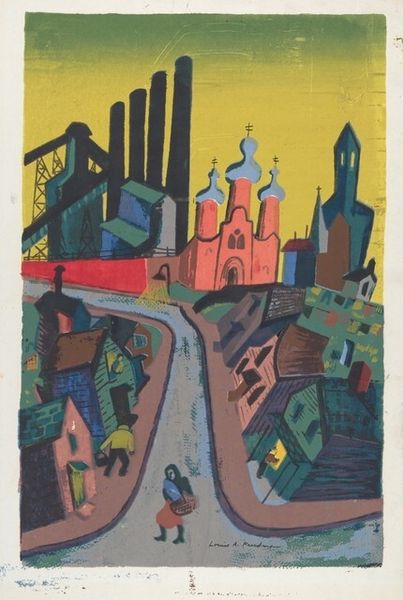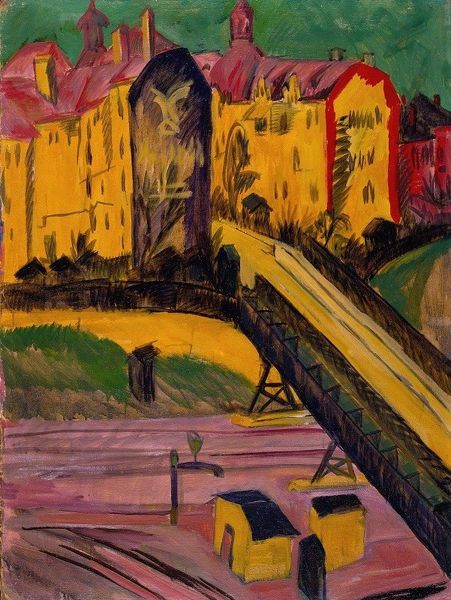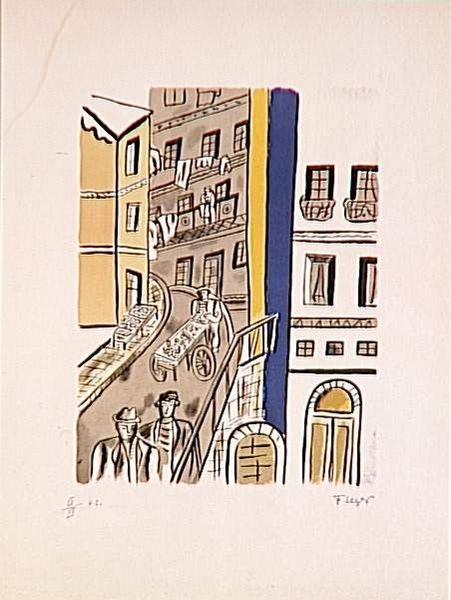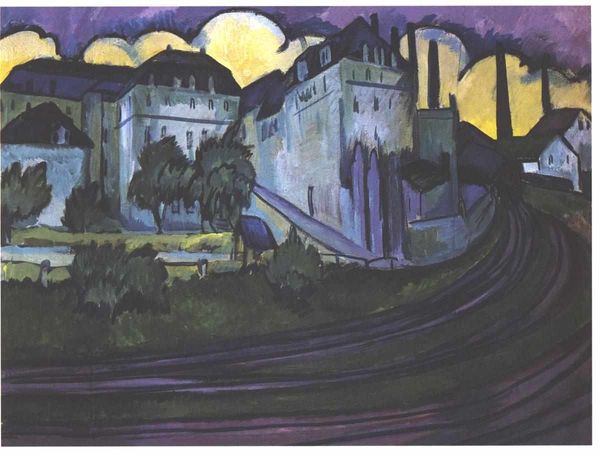
print, oil-paint
# print
#
oil-paint
#
landscape
#
german-expressionism
#
oil painting
#
road
#
expressionism
#
cityscape
#
building
Copyright: Public domain
Curator: Ernst Ludwig Kirchner's "Hallesches Tor, Berlin," painted in 1913, captures a bustling cityscape. Editor: My initial reaction is unease; there's a certain restlessness in the distorted perspective and clashing colors. The orange sky feels almost suffocating, doesn’t it? Curator: It does reflect the Expressionist movement’s focus on conveying raw emotion rather than realistic depiction. Think of Berlin at that time—a burgeoning metropolis undergoing rapid industrialization and societal shifts. The painting could be interpreted as a visual metaphor for alienation and the anxieties of modern urban life. Editor: So, you're situating it within the context of social anxieties... I see it as a critique of progress itself. The elevated train, a symbol of modernity, seems to dominate the scene, almost eclipsing the traditional buildings and the people below. Is Kirchner suggesting a loss of human scale within this new industrial world? Curator: Precisely. And considering Kirchner's involvement with the Die Brücke group, known for their rebellious spirit and focus on representing modern experiences, it makes sense. The fragmented composition and jarring juxtapositions invite us to question the very nature of urban progress and its impact on the individual. The artist explores how modern structures were layered onto the urban grid as this particular part of the city changed with time and industry. Editor: Right, the figures below seem almost ghostlike, lost in the shadows. They emphasize a kind of social isolation, perhaps? Kirchner paints a sense of detachment that feels rather pertinent to how we interact in public even now. Curator: Exactly. The use of oil paint with visible brushstrokes adds to the sense of urgency and emotional intensity. I wonder what the original reception was to such a depiction of Berlin, and who was given permission to move and exist in new urban layouts. Editor: Well, placing this work in the context of both German Expressionism and Berlin’s societal upheaval truly enriches our viewing experience, making this unsettling painting surprisingly relatable, even a century later. Curator: Indeed. By considering both the artistic and socio-political landscape of its creation, the artwork opens avenues to contemporary discussions about societal values, and urban developments.
Comments
No comments
Be the first to comment and join the conversation on the ultimate creative platform.


